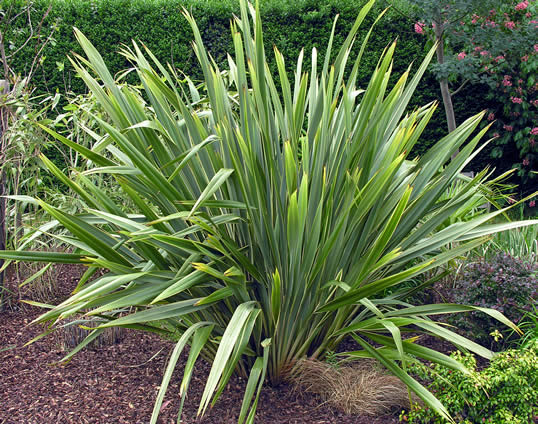After a miserable month of wet and cold weather, the UK is just starting to warm up with temperatures of 22 – 27c expected this week in London.
Time to take advantage of all that rain and the muggy temperatures by transfering your garden into a tropical paradise for the next few months.
In this guest blog Will Giles, Guru of Exotic Gardening, offers advice on maintaining tropical and exotic plants during challenging UK temperatures.
Will is famous the world over for his expert knowledge of exotic plants – and his colourful exotic shirts! His garden is one of my favourite places to explore every summer. Check out this fascinating blog which will surely tempt you to visit his inspirational garden. http://www.exoticgarden.com/public-opening-times.php
What a devastating winter and early summer we have had with temperatures dipping down to some of the coldest on record for over 100 years and some of the wettest months on record as well! For those growing borderline exotic plants, it has certainly been a testing time indeed. Here at the Exotic Garden in Norwich there have been many losses though thankfully not as bad as some exotic gardens have reported. Many people have said to me, ‘surely this must mean that Global Warming isn’t happening?” This is why we should really use the term Climate Change instead, as different parts of the world will be affected in different ways according to how the world warms up – and 2010 was ranked as one of the warmest on record! Some parts of our planet will get warmer and dryer while others will become wetter and cooler. As we live on an island we are lucky to have a temperate climate given our northerly latitude, compared to say parts of Canada that have been wickedly cold this winter. Most of the last decade though has seen comparatively mild winters for the UK and, up until the winter before last, I hadn’t wrapped any of my tender exotics for about seven years, so it was quite a shock to have two consecutive cold ones! Whether this coming winter will follow a short term trend is in the lap of the gods However, I feel that being prepared is the appropriate answer, though in the decades to come, cold winters will probably dwindle back into much milder conditions, hence the current cold winters should be seen as more of a blip in our changing and seemingly more unpredictable weather patterns.So What To Grow?
Many nurseries have sprung up in recent years selling borderline to tender exotics retailing plants that may only take 5 to 6 degrees of frost, so this winter has killed most of those outright unless protected or brought into frost free conditions. Of course with a very deep pocket plants can be replaced every spring and I know a few exoticists will still do this! For most of us though, caution is probably the best route to take by growing plants that look tropical, i.e. with big leaves, or as I do, interspersing with tender plants during the summer month.
Never-the-less,there is nothing wrong with growing borderline plants if you are prepared to protect them during the winter months. I recently took the wraps of my *Musa basjoo* and found that despite the effort put into their protection; most of their stems had been cut to the ground. Thankfully though this a tough banana which usually reshoots from the ground hence its common name the root hardy banana is appropriate. From an established rootstock they will grow back up to 6-10ft in one season if well fed.
If you have shrubs which look, well – dead -don’t give up just yet. If you scratch the bark with your thumb nail and it is brown keep going down until you find green showing through underneath, then cut all the dead foliage and stems foliage off above that point. If it is something with a bark covered stem such as Cordyline’s, wait until at least the end of May or early June before discarding them as new shoots will usually appear around the base of the stem and often several feet up, where you can cut/saw off all the dead growth above that point. Unless a small plant they will reshoot like mad,because of their extensive root system.
Phormiums have taken a beating over the last two winters, with some of mine having about 80% of their fronds flattened by snow and withered by frost.These can be cut down to within 6-12ins of the ground and fed, where they should slowly regenerate during the summer, though old specimens are very slow to regenerate indeed. Like me though this might be too slow, hence digging them out completely and planting with new ones or something completely different might be the only answer and a great excuse to try something else!
On the softer perennial front though, plants such as members of the Ginger family have been growing happily outside for the past 15 years in my garden with little or no protection. If about a foot of straw is placed over the top in the autumn with some plastic sheeting pegged down over the top, they will survivie all but the most severest of winters.
Tree ferns, the most commonly grown being *Dicksonia Antarctica*, have certainly taken a beating this winter, especially in exposed positions with desiccating winds. I have heard many reports of the central crosiers (the growing point) having turned to goo, which means they are most likely dead!I stuffed mine with a thick layer of straw which seems to have worked well with a minimum of -11C, though this is the first winter that all of the fronds have turned brown, which have since been removed.
Many palm trees have failed this winter and I have lost several. The toughest though seems to be the good old windmill palm *Trachycarpus fortunei* which copes with temperatures down to about -17C for short periods; hence I will be planting more of these in my garden.
http://www.athelasplants.co.uk/palm-trees-c17/trachycarpus-fortunei-chusan-palm-p88
Check out these nurseries for more tropical and exotic plant ideas http://www.myclimatechangegarden.com/blog/buy-climate-garden-plants
If you have any questions about plant losses not covered here, do let Will know and he will try and give you a pertinent answer. The main things is don’t give up, think positive and let’s hope it’s a really good summer – from July onwards!
Contact Will Giles at [email protected]
















June 28th, 2012 at 9:02 am
Will, what do you think of the chameropes all mine , the centers came out do you think they,ll come back from the base
June 28th, 2012 at 11:20 am
Carol – Unfortunately most palms unlike Cordyline’s only have one growing point so will not re-grow. Chamaerops humilis is often a multi-stemmed palm, so there maybe some shoots underground, hence I would leave your plant in-situ until well into the summer, then if nothing has appeared by then it will be time to dig it up and start again! Good luck – Will
June 8th, 2013 at 3:56 pm
Hi, i had the same situation about 2 years ago when my Chameropes …. i thought had died leaves all brown and looked a total wreck that was during our really bad winter i think 11/12?
It was goning to be a spring job to remove it and plant a Trachy in its place welll spring and half of the summer came and went before i had my spade out and to my luck it had regrown and its looking even better I also think its hardier…. could that be?
Rich
June 10th, 2013 at 4:24 pm
Many plants have been seriously challenged by the past 3 harsh long winters in the UK
Even native varieties have struggled with the wet and cold.
Plants do adapt and often the more delicate exotic varieties retreat into the ground to protect themselves. It is like hibernating and they shut down their systems to conserve energy until the light and warmth return- just like many animals.
If you need any further information please do contact an excellent nursery called http://www.athelasplants.co.uk
May 1st, 2014 at 10:16 am
The worst part about winters is in the sad affect over my palm trees.Is there anyway to regain them back since now I think seasonal change will also be quite favorable? I thinks trees still have the courage to bear with winters but poor plants, they just get completely shattered. Sad really very sad!